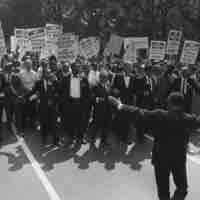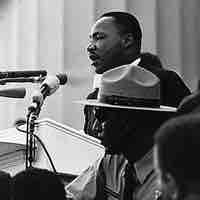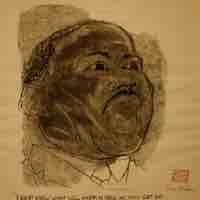Section 4
The Emergence of the Civil Rights Movement
By Boundless

The 1950s and the 1960s witnessed a dramatic development of the Civil Rights Movement that at the time accomplished a series of its goals through the acts of civil disobedience, legal battles, and promoting the notion of Black Power.
In 1954 Brown v. Board of Education, the Supreme Court ruled separate public schools for black and white students unconstitutional.
The Montgomery Bus Boycott was a protest campaign against the policy of racial segregation on the public transit system of Montgomery, Alabama.

Martin Luther King, Jr. was an American clergyman, activist, and prominent leader in the African-American Civil Rights Movement.

Religious leaders, thousands of black churches and its anonymous members, as well as religious rhetoric played major role in the Civil Rights Movement.
The consistent struggle of the Civil Rights Movement and efforts of hundreds of thousands anonymous African Americans forced legislators to enact a series of civil rights legislation in the 1950s and 1960s.